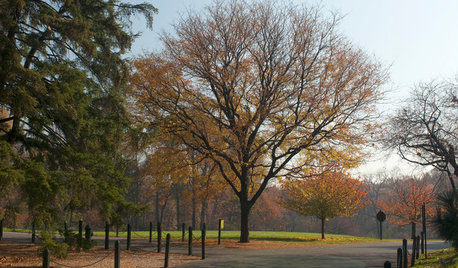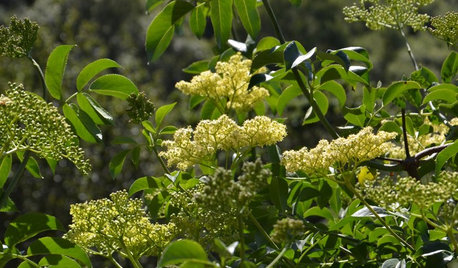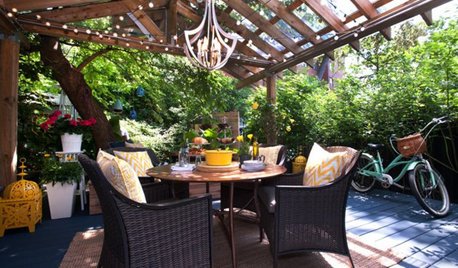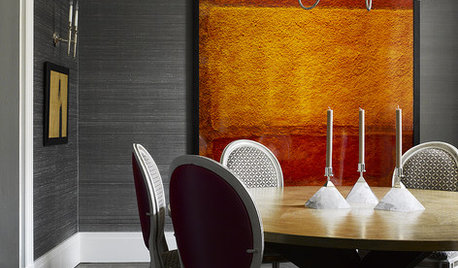Mulberry Trees
starburst
16 years ago
Related Stories

FALL GARDENING11 Trees for Brilliant Fall Color
Give your landscape the quintessential look of autumn with the red, orange and yellow leaves of these standouts
Full Story
EDIBLE GARDENSHow to Grow 10 Favorite Fruit Trees at Home
Plant a mini orchard in fall, winter or early spring to enjoy fresh-off-the-tree fruit the following year
Full Story
GARDENING GUIDESGreat Design Plant: Honey Locust Tree
No, it doesn't actually produce honey. But its dappled light and tolerant nature are treats in city and country settings alike
Full Story
TREES7 Deer-Resistant Flowering Trees to Plant this Fall
If you live in a neighborhood with roaming deer, consider these beautiful trees that won't tempt hungry guests
Full Story
GARDENING GUIDESPlant Black Cherry Trees for the Birds and Bees
Plant Prunus serotina in the Central and Eastern U.S. for spring flowers, interesting bark and beautiful fall color
Full Story
GARDENING GUIDESGreat Design Plant: Sambucus Nigra Caerulea for the Birds
Blue elderberry is a favorite of birds and other wildlife in its native California
Full Story
PATIO OF THE WEEKYear-Round Gazebo Glory in Toronto
Lilacs in spring, snuggly blankets in winter. With weatherproof panels and seats aplenty, this gazebo is guest ready all year long
Full Story
LANDSCAPE DESIGNGreat Design Plant: Retreat to the Shade of Hardy Catalpa
Big foliage and a towering height provide a shady respite in summer, but that's not all hardy catalpa offers dedicated gardeners
Full Story
GARDENING GUIDESGreat Design Plant: Sambucus Nigra
Common elderberry is a highly adaptable shrub from the eastern U.S., with berries galore for wildlife and humans alike
Full Story
DECORATING GUIDES8 Wonderful Ways to Splurge With Silk
Treasured for its luster and elegance, this fabric far outshines its imitators in all kinds of uses around the home
Full Story





northeastwisc
northeastwisc
Related Professionals
Erie Landscape Architects & Landscape Designers · Pelham Landscape Contractors · Azalea Park Landscape Contractors · Haverhill Landscape Contractors · Lemoore Landscape Contractors · Nashua Landscape Contractors · Siloam Springs Landscape Contractors · The Villages Landscape Contractors · North Hills Landscape Contractors · Foothill Ranch Carpenters · Hayward Carpenters · Holliston Carpenters · Rantoul Carpenters · Sugar Land Carpenters · Sunnyvale Carpentersmaplerbirch
northeastwisc
maplerbirch
starburstOriginal Author
northeastwisc
johnml
njbiology
waterlily_girl
perchsnatcher